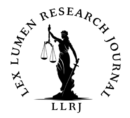Written by Aishani Aggarwal,
Intern-Lex Lumen Research Journal,
June 2025
Understanding Elderly Abuse in India
Elder Abuse or the abuse of an older adult, is the intentional harming of a vulnerable adult over the age of 60. A single or repeated act, can classify as Elder Abuse, when due to lack of appropriate action, a situation requiring trust of the vulnerable adult ends up causing distress or harm to the elder[1], in terms of financial, physical, sexual, psychological, material or emotional abuse. The most common type of elder abuse is ‘emotional or psychological abuse’, followed closely by ‘neglect’ and ‘financial exploitation’. According to the HelpAge India report [2](“Elder Abuse in India: 2022”): 47% of the elderly surveyed reported experiencing ‘abuse or mistreatment’. Among those abused:
- 62% reported emotional/psychological abuse.
- 43% faced neglect (being ignored, left alone, or not being provided necessary care).
- 21% reported financial exploitation (forced to give up property, pensions, or money).
There is a significant form of cultural divide in Urban and Rural areas, where the amount of reported cases differ significantly due to the stigma, shame and embarrassment for the same. While urban elderly are more likely to be vocal, abuse is more underreported in rural India. Isolation in nuclear families in cities often increases vulnerability to neglect and emotional abuse.
Constitutional and Human Rights Perspective
- Article 21 of the Indian Constitution, guaranteeing the right to life and personal liberty, extends to elderly individuals, encompassing their right to live with dignity and freedom from abuse and exploitation. This fundamental right includes access to basic necessities, healthcare, and protection against various forms of abuse, ensuring a standard of living adequate for their well-being. The right is extended to its elderly counterparts, ensuring their right to dignity.
- Article 41 of the Indian Constitution, part of the Directive Principles of State Policy, obligates the state to provide public assistance, including support for the elderly, within its economic capacity. This article is relevant to elderly abuse because it highlights the state’s responsibility to ensure the well-being of senior citizens, which includes protection from abuse and neglect. The state is expected to make effective provisions for securing the right to public assistance in cases of old age.
- Vasudeo Vishwanath Rao v. Vimal (1978)[3]– This case is one of the earliest and most significant Indian decisions interpreting Section 125 of the Code of Criminal Procedure, 1973, in the context of ‘parents claiming maintenance’ from their children. This case emphasized that it is the ‘legal and moral’ obligation of the children to maintain their parents, to prevent the financial ruin of the parents, given that the parents are unable to maintain themselves. It is a pioneering judgement that reaffirmed elderly rights. This judgement was the law governing maintenance claimed by parents before the statute of ‘Maintenance and Welfare of Parents and Senior Citizens Act, 2007[4]’ mandated maintenance of parents by children.
Criminal and Statutory Legal Protections
- Maintenance and Welfare of Parents and Senior Citizens Act, 2007-
- Key provisions include- Section – 4 – Maintenance of Parents and Senior Citizens– Children are obligated to maintain parents if parents are unable to maintain themselves, Section – 17 – Right to legal representation– appearing before a tribunal or appellate tribunal, all parties must represent themselves, Section – 24 – Exposure and abandonment of senior citizen- person liable for caring for a citizen, whether it is the children of the senior citizen or a caretaker, can be made criminally liable for abandoning the elder.
- Shortcomings of the act include –
- Lack of awareness- regarding the act, Section – 21 dictates certain ways for the State government to publicize, but the protection under the same is widely unknown to the general public.
- Delay in relief– The Act establishes ‘Maintenance Tribunals’ at the sub-divisional level, but many are overburdened, under-resourced, or not fully functional. The process can be slow and intimidating, especially for frail or ill senior citizens.
- Enforcement gaps- Even when maintenance is awarded- recovery mechanisms are weak. Parents may reluctantly withdraw cases due to emotional dependence or societal pressure. Filing a case against one’s children is seen as ‘taboo’, especially in traditional households.
- Bharatiya Nyaya Sanhita, 2023 (BNS)[5]
- Section 69 – Theft by a person in a position of trust – Covers thefts committed by relatives, caretakers, domestic help, etc. If the theft is from a vulnerable person (including senior citizens), punishment is more severe. Example: A servant stealing from a dependent, elderly employer.
- Section 115 – Voluntarily causing hurt – If hurt is caused to a vulnerable person, such as an elderly person, it may be considered aggravated. This can attract stricter sentencing, especially if committed by someone in a position of care.
- Section 317 – Criminal breach of trust by guardian, agent or caretaker – Specifically targets misuse of financial control over an elderly person by someone trusted (like family or legal guardian). Stronger punishment if the offender was entrusted with property or finances of a vulnerable person.
- Section 109 – Abetment of suicide – If a person abets the suicide of a senior citizen who may be emotionally, physically, or financially abused, the intent and position of the abuser are crucial in sentencing.
- Abandonment or Neglect – While BNS does not explicitly criminalise neglect or abandonment of parents, such actions may invite prosecution under: Criminal negligence if harm is caused or Omission to give aid if duty to care exists. For civil obligations, the Maintenance and Welfare of Parents and Senior Citizens Act, 2007 still provides remedies that are not repealed by BNS.
- General Provisions – Throughout BNS, where the phrase “vulnerable person” is used (including elderly), it may lead to: Aggravated offences, Stricter punishments, Recognition of power imbalance or exploitation. Example: Offences involving cheating, coercion, or wrongful confinement of vulnerable persons may carry harsher outcomes if committed against senior citizens.
In a country that reveres elders in principle but often neglects them in practice, the rising incidence of elderly abuse that is emotional, financial, and physical is a silent crisis demanding urgent redress. While the Maintenance and Welfare of Parents and Senior Citizens Act, 2007, was a landmark in legally recognising the right of elders to be cared for, its practical enforcement has been riddled with systemic gaps, low awareness, and cultural stigma. Criminal protections under the new Bharatiya Nyaya Sanhita, 2023, have begun to acknowledge the elderly as “vulnerable persons,” but more needs to be done to address the nuanced and intersectional realities of abuse, neglect, and abandonment.
As India’s population ages rapidly, with millions of elderly persons depending on their families or caregivers, legal tools must evolve beyond symbolic safeguards. This includes expanding the scope of elder abuse to include psychological and digital exploitation, strengthening maintenance tribunals, providing free legal aid, regulating elder care institutions, and ensuring access to quality healthcare. Judicial recognition in the landmark case Vasudeo Vishwanath Rao v. Vimal has laid the ethical and constitutional foundation for elder justice, but legislation must now match that moral imperative with effective infrastructure and implementation.
Ultimately, safeguarding the dignity of our elders is not only a matter of law, but of collective conscience. “Grey Rights Matter” is more than a sloganit is a call to shift from reverence in words to respect in action.
[1]Definition of Eldery Abuse by WHO
[2]Bridge the Gap: Understanding Elder Needs 2022 Report
[3] 1979 Cri LJ 1390 (Bombay High Court)
[4] No. 56 OF 2007
[5] No. 45 OF 2023


